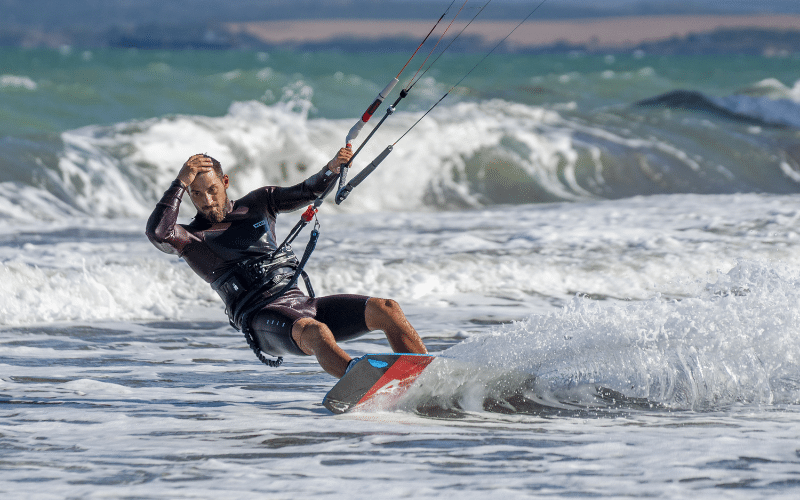Craving adrenaline with a side of ocean spray?
Kiteboarding is your answer–but tackle the waves with the right gear or prepare to wipeout.
Let’s gear up for glory with the definitive checklist for kiteboarding daredevils. Ready to harness the wind?

For Kiteboarders:
- Kiteboard
- Kite
- Harness
- Bar and Lines
- Wetsuit or Drysuit (depending on weather)
- Impact Vest
- Helmet
- Safety Leash
- Booties (if required)
- Pump (for inflatable kites)
- Water Bottle
For Instructors and Schools:
- Safety and Rescue Equipment
- Spare Gear (various sizes of kites and boards for teaching)
- First Aid Kit
- Communication Devices (waterproof walkie-talkies or VHF radios)
- Instructional Materials
For Facilities:
- Safe Launching and Landing Areas
- Storage Area for Equipment
- Rescue Boat (for offshore kiteboarding spots)
- Weather Station (for real-time weather updates)
- Classroom or Shade Area for Theory Lessons
Table of Contents
Equipment for Kiteboarders
#1 Kiteboard

The kiteboard is the foundational piece of equipment that enables riders to glide across the water. Its design caters to different styles and proficiency levels, ensuring a stable and responsive ride critical for both beginners and advanced kiteboarders alike.
#2 Kite

The kite acts as the main source of propulsion, skillfully crafted to harness wind power. It’s essential for maneuvering and reaching high speeds on the water. Kites come in various shapes and sizes to accommodate weather conditions and individual rider preferences.
#3 Harness
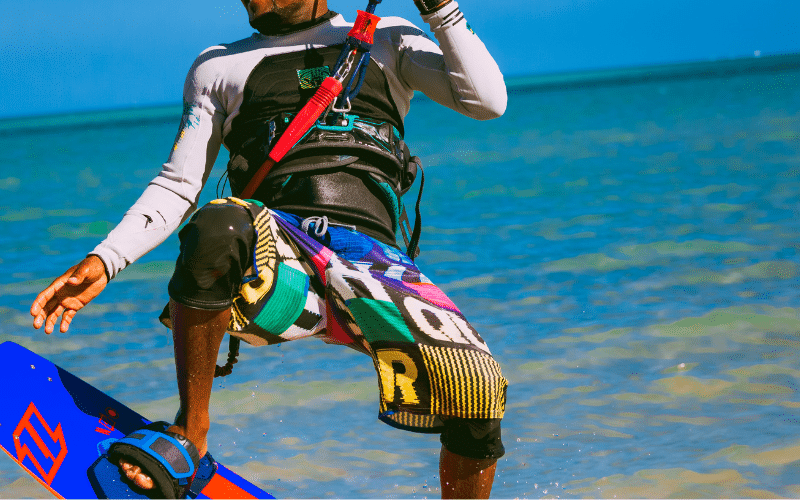
A harness is crucial to connect the rider to the kite, allowing them to control movements and steer with their body. It helps distribute the kite’s force across the rider’s torso, reducing fatigue and enabling longer sessions on the water.
#4 Bar and Lines
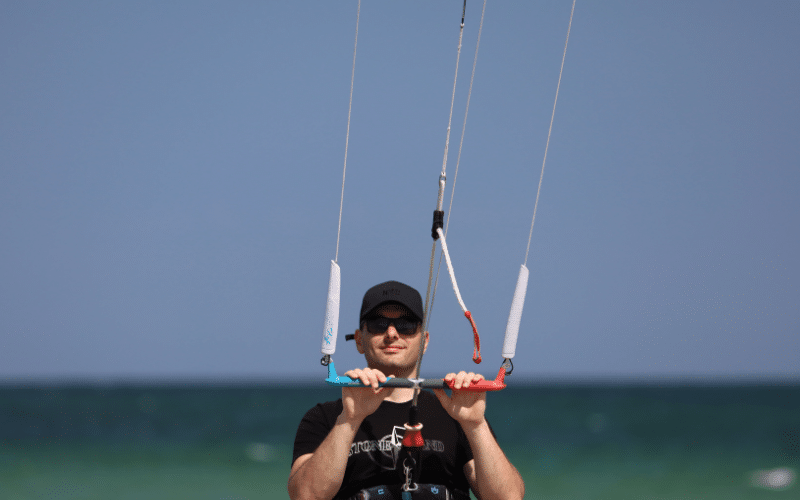
The bar and lines are key to controlling the kite’s direction, speed, and angle in relation to the wind. This control system is essential for executing maneuvers, ensuring safety, and providing the rider with precise handling.
#5 Wetsuit or Drysuit

Water temperature dictates whether a wetsuit or drysuit is needed; both serve to keep the rider warm and protected in varying conditions. Proper thermal insulation is essential for comfort, extending session length, and guarding against hypothermia.
#6 Impact Vest

An impact vest provides added buoyancy and protection for kiteboarders, cushioning the body from impacts during falls. It’s an important safety measure that can also boost rider confidence when attempting new tricks or riding in choppy waters.
#7 Helmet
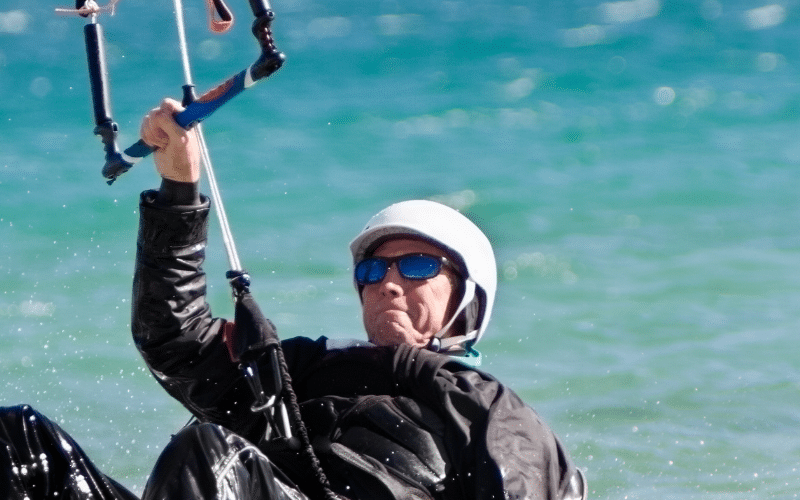
Helmets are a critical safety measure to protect the rider’s head from impacts. Whether colliding with equipment or water, a helmet can significantly reduce the risk of head injuries, making it indispensable for all levels of participation.
#8 Safety Leash
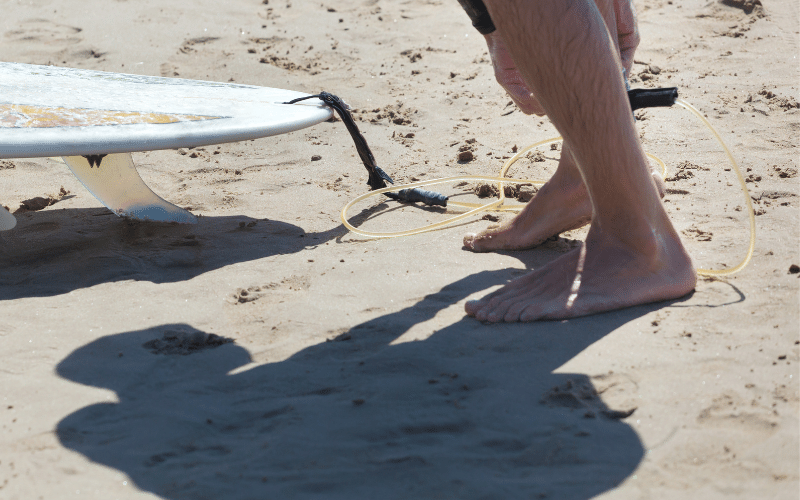
A safety leash ensures that the kite remains attached to the harness in case of accidental release or emergency. It’s a crucial safety element that can prevent the kite from drifting away and assists in regaining control during unexpected situations.
#9 Booties
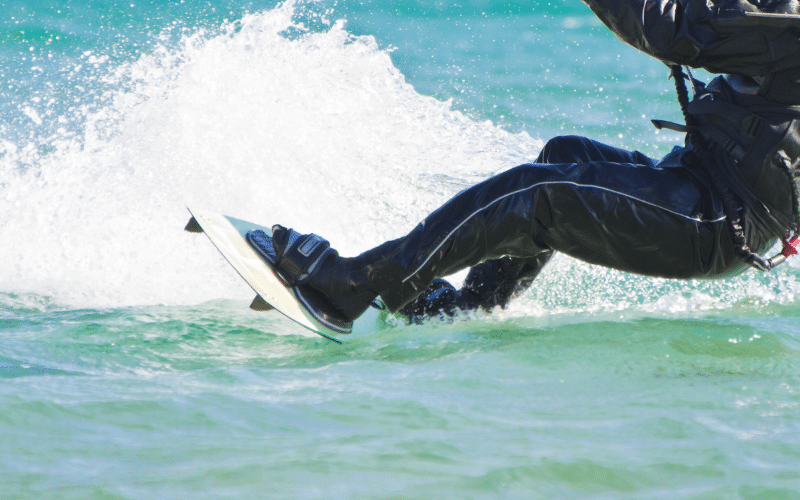
When required, booties protect the feet from cold water, sharp objects, and rocky launch spots. Their non-slip soles and neoprene insulation add an extra layer of safety and comfort, essential for riders in diverse conditions.
#10 Pump
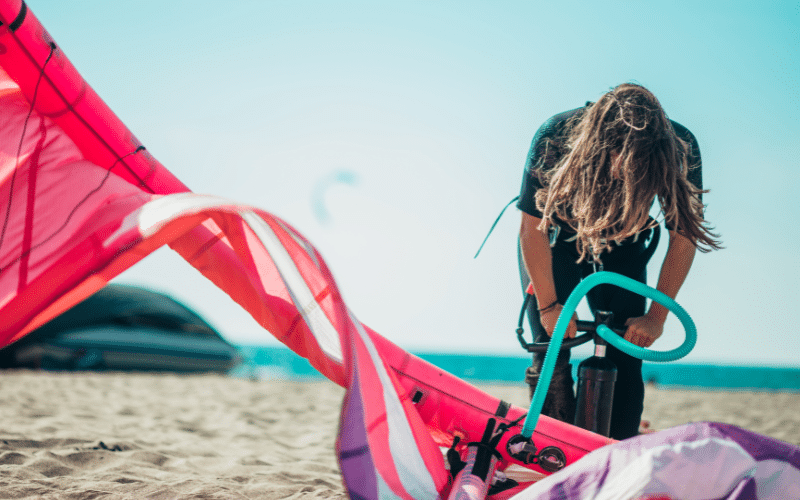
A pump is necessary for inflating the kite’s bladders, which provide structure and aerodynamics. A reliable pump ensures that kites are inflated to the right pressure for optimal performance and safety during sessions on the water.
#11 Water Bottle

Hydration is a key component for maintaining focus and endurance during physical activity. A water bottle is essential kiteboarding gear, keeping riders hydrated and at their best, especially during long sessions or in hot climates.
Equipment for Instructors and Schools
#1 Safety and Rescue Equipment
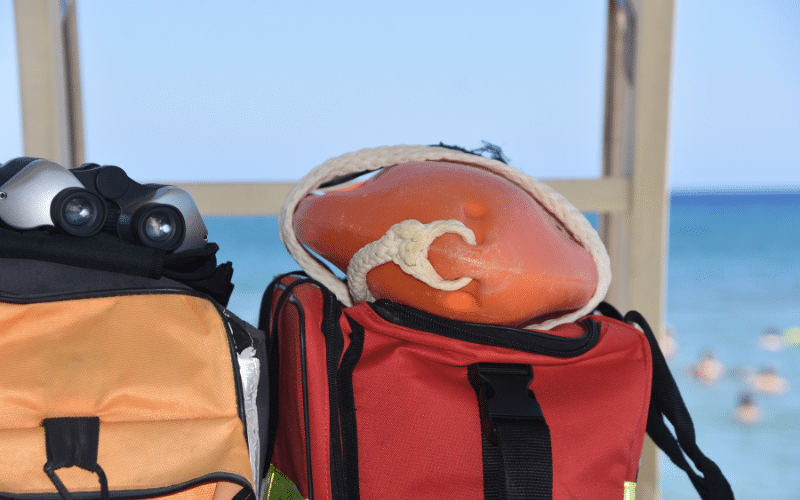
Safety and rescue equipment is vital for kiteboarding instructors to ensure the well-being of students. It typically includes life jackets, rescue boards, and signaling devices to assist in emergencies and provide fast response in case of accidents, reinforcing a safe learning environment.
#2 Spare Gear
Spare gear, consisting of various sizes of kites and boards, is essential for kiteboarding schools to accommodate students of different skill levels and body weights. Having a diverse range of equipment ensures a tailored learning experience and progression for each student.
#3 First Aid Kit

A well-stocked first aid kit is necessary for managing minor injuries and medical situations that may arise during kiteboarding lessons. It contains items like bandages, antiseptics, and pain relievers, allowing for immediate attention to cuts, scrapes, or stings, thus prioritizing student safety.
#4 Communication Devices

Waterproof communication devices such as walkie-talkies or VHF radios are essential for kiteboarding coaches. These tools enable real-time communication with students and other instructors, especially in situations where voice commands might not be audible due to distance or wind.
#5 Instructional Materials
Instructional materials, including manuals, videos, and visual aids, are key for effective learning. They help in conveying complex kiteboarding concepts in an easily digestible format, enriching the educational experience and fostering a thorough understanding of the sport.
Equipment for Facilities
#1 Safe Launching and Landing Areas

Safe launching and landing areas are crucial for kiteboarders’ safety, allowing for smooth transitions in and out of the water. These designated zones minimize the risk of collision with bystanders and provide a clear path for the management of equipment, making them an integral part of any kiteboarding facility.
#2 Storage Area for Equipment
A storage area protects equipment from the elements and theft, offering a secure space for kiteboards, kites, and accessories. Proper storage extends the life of equipment and keeps the facility organized, which is essential for operations and provides a professional environment for riders and instructors.
#3 Rescue Boat
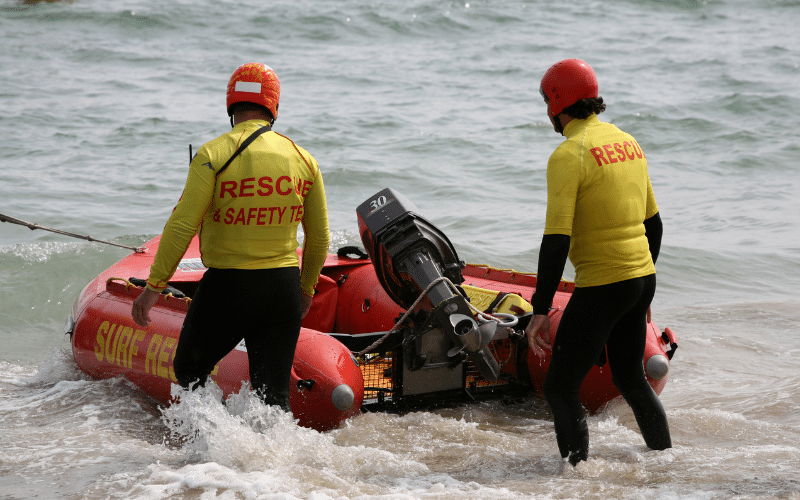
At offshore kiteboarding locations, a rescue boat is a lifeline, providing immediate assistance to riders in distress. It ensures a quick response to accidents or equipment failures, safeguarding the well-being of participants and is a non-negotiable safety measure for responsible kiteboarding facilities.
#4 Weather Station
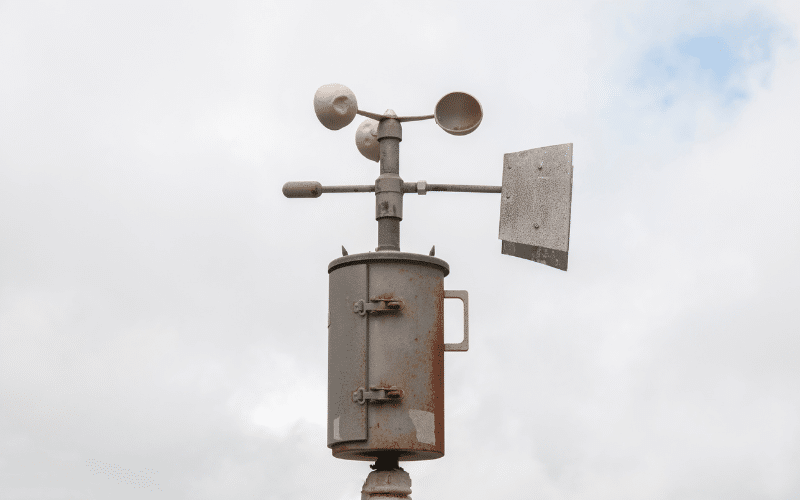
Real-time weather updates are vital for ensuring the safety of kiteboarders, as conditions can change rapidly. A weather station at the facility allows for informed decision-making about when to ride, helping to prevent accidents and ensuring a safer environment for both novice and experienced kiteboarders.
#5 Classroom or Shade Area for Theory Lessons
A classroom or shaded area provides a conducive learning environment for theoretical lessons. It’s a space where instructors can teach kiteboarding principles and safety protocols without the distraction of sun, wind, or rain, enhancing the educational experience for students.
Please note that this optimized equipment list and descriptions are specifically tailored to kiteboarding and seek to cover the basic requirements for an operational kiteboarding facility. Each listed item is essential for the safety and functionality of the sport.

FAQ
What is the equipment you need to play Kiteboarding?
A kite, a board, a harness, control bar with lines, and a safety system are the equipment you need to play kiteboarding. Protective gear like a helmet and impact vest is also advised.
What is the most important equipment in Kiteboarding?
The kite is the most important equipment in kiteboarding, as it propels the rider and dictates the ability to maneuver, speed up, and perform tricks.
What is a recommended list of Kiteboarding equipment for beginners?
Here’s a recommended list of kiteboarding equipment for beginners: a trainer kite, a larger beginner-friendly board, a comfortable harness, floatation and impact vests, a helmet, and a safety leash. These items prioritize safety and learning.
